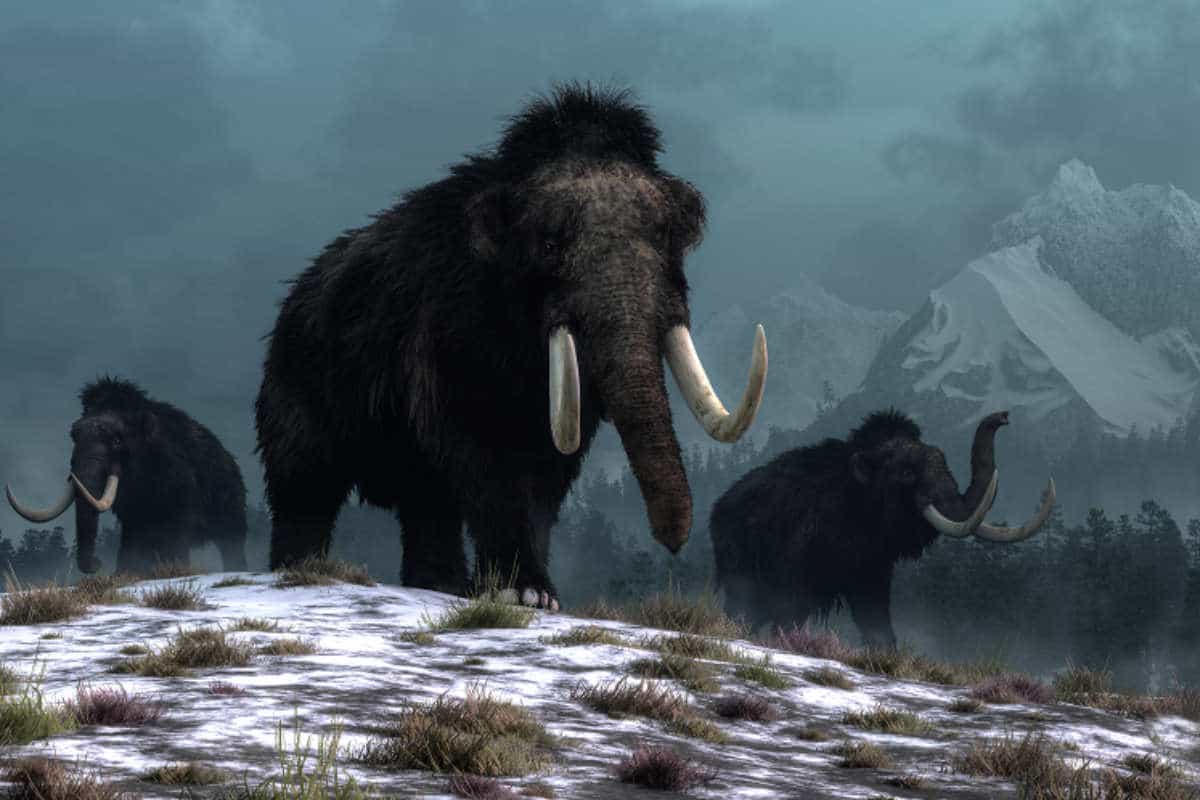
It was long thought that early humans had a hand in the extinction of these furry cousins of the elephant. But nothing turns out to be less true.
Woolly mammoths roamed the earth for five million years. Until they disappeared for good almost 4,000 years ago. What exactly killed them has been the subject of fierce debate for years. Is man to blame? Or the changing climate? Researchers are now putting an end to this ongoing discussion in one fell swoop. For they now claim to have unraveled the true cause of the mammoth’s extinction.
Human
Some scientists have linked the mammoth’s fateful disappearance to humans. That’s because humans are known to hunt the animal. Not only were mammoths a regular part of their diet, the skeletons were used to build shelters and harpoons were made from giant tusks. The oldest known musical instrument – a flute – is also made from a mammoth bone. This makes it possible that humans were partly responsible for their demise. “Scientists have been debating why mammoths went extinct for 100 years,” said researcher Eske Willerslev. “People have been blamed because the animals lived on for millions of years, despite previous climate changes. But when they came to live side by side with humans, it wasn’t long before they disappeared. That is why we were accused of killing the mammoth.”
Study
In a new study, the researchers took another look at the controversial issue. The team analyzed plant and animal remains — including urine, feces and skin cells — found in various places in the Arctic over the past two decades. It leads to a remarkable conclusion. Because the findings indicate that when icebergs melted, it became far too wet for the mammoths’ liking. This practically wiped out their main food source – vegetation.
Vegetation
As mentioned, the woolly mammoth lived on Earth for five million years and endured several harsh ice ages during this time. During this period, herds of mammoths, reindeer and woolly rhinoceroses thrived in cold, snowy conditions. Despite the cold, a lot of vegetation grew, such as grass, flowers, plants and small shrubs. The mammoths presumably pushed the snow aside with their giant tusks and then uprooted tough grasses from the ground with their trunks. The reason they were so immense, by the way, is because they needed huge stomachs to digest all the grass.
Wet
But as the climate got wetter and the ice started to melt, it led to the formation of lakes, rivers and swamps. “The ecosystem changed and the vegetation decreased,” said study leader Yucheng Wang. And that means there probably wasn’t enough greenery left to keep the mammoth herds alive.
acquittal
It means acquittal for humanity. Because apparently we had nothing to do with the disappearance of the mammoth. “We have shown that climate change, especially precipitation, directly drives vegetation change,” concludes Wang. “People had no influence at all, based on our models.” In addition, we must not forget that for humans there were many animals around that were easier to hunt than a giant woolly mammoth. “They could grow to be the size of a double-decker bus!” exclaims Willerslev.
Rapid Climate Change
Incidentally, climate change was not the only problem. “It was its speed that was the final nail in the woolly mammoth’s coffin,” Willerslev said. “They were unable to adapt quickly enough when the landscape changed dramatically and their food became scarce.”
hard lesson
It means that in fact precipitation and subsequent changes in vegetation were the cause of the woolly mammoth’s decline. This happened over such a short period of time that the animals had no time to adapt to survive. According to the researchers, the results are a hard lesson from history. “It shows how unpredictable climate change is,” Willerslev says. “Once something is lost, there is no going back.”
In addition, the research shows that when it comes to the impact of dramatic weather changes, nothing is guaranteed. “Early man saw the world change beyond recognition,” Willerslev says. “That could easily happen again. We cannot blindly assume that we will witness it ourselves. The only thing we can predict with any degree of certainty is that the change is huge.”
Source material:
“Humans did not cause woolly mammoths to go extinct – climate change did– St John’s College, University of Cambridge
Image at the top of this article: Daniel Eskridge